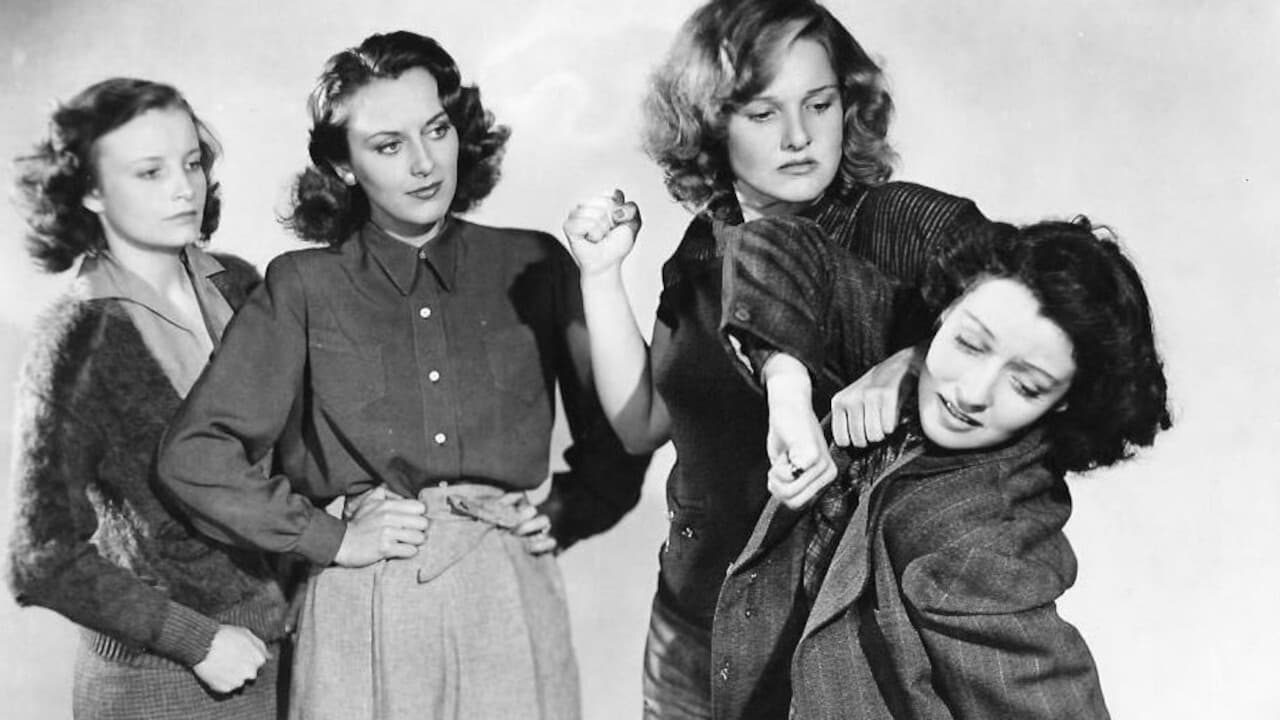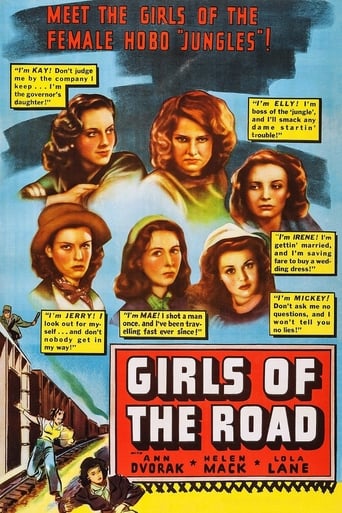

Girls of the Road (1940) ** (out of 4) "B" picture from Columbia has Ann Dvorak playing the daughter of the governor who decides to see what it's really like out on the streets. She joins up with a group of homeless girls who travel from town to town struggling to get food or a roof over their head. This film pretty much turns out to be a watered down version of William A. Wellman's classic WILD BOYS OF THE ROAD and while its heart is in the right place the final product doesn't have much going for it. The biggest problem I had with the film was a little bit of logic but we see this rich daughter seeing her new friends struggle yet she never offers them any help. Yes, I understand she wants to see what it's like being homeless but you'd think she would take care of her friends and just go on her little experiment alone. Another problem with the film is that the acting is pretty bad. Normally this wouldn't be too much of a deal breaker in a "B" picture but there are many scenes here that want an emotion impact and it just can't happen due to the bad acting. There's a death scene here, which is pretty embarrassing as well as a few other dramatic moments that just don't work. The screenplay really doesn't offer anything original as we go down countless roads that other films went down with much better results. I must admit that I found the 61-minute running time to feel too long and in the end the film really doesn't work on any level. What keeps the movie going is the fact that women take up all the lead roles and this little switch does make the film at least watchable if you don't mind "B" movies. Dvorak certainly had much better days as she appears uninterested from start to finish.
... View MoreIn many ways, this film reminds me of the 1933 film "Wild Boys of the Road"--which is about homeless teens who wander about the country (often in vain) looking for work and a square meal. This film is about homeless ladies who are in similar circumstances. How serious this problem was is uncertain (it's not like they kept statistics on this), but the movie seems earnest--and amazingly naive.The film begins with a commission reporting to the Governor about the plight of wandering homeless ladies. The Governor is moved and wants to do something but is uncertain if anything can be done about the problem. However, his secretary (Ann Dvorak--who also happens to be his daughter in the film) decides to investigate herself by hitting the road and posing as a homeless woman. This is an insanely naive and rather offensive notion--especially when she could be raped or otherwise exploited and the idea of a rich girl "slumming it" is a tad silly. In fact, in one of the first scenes, this nearly happens (in a sanitized 1940 manner) as a man isn't about to take 'no' for an answer after he picks up Ann.Ultimately, after spending time getting arrested for vagrancy, being hassled by cops, jumping trains, getting robbed and the rest in this 'dog eat dog world', Ann returns home to report to Daddy about the life of girl hobos. My quote in the summary, while not exactly what she said isn't that far from it! And, naturally, it all had a happy ending.To me, this film seemed rather fake. All the ladies looked really ragged...like they'd forgotten to put on the morning makeup and had gone a whole week without going to the beauty parlor! The most egregious of these was Dvorak--who looked like she was dressed for publicity photos of "her life when she has a day off". The ladies' "down and out" looks just seemed like Hollywood's sanitized version of the life of a homeless woman--the type that wouldn't feel particularly threatening to most in the audience. Compare this sort of film with a REAL film about social ills of the 1930s (such as "I Was A Fugitive From A Chain Gang") and this one comes up wanting. Perhaps well-intentioned and the acting wasn't bad, but it was fake from start to finish.
... View MoreOnce again, Turner Classic Movies has rescued another rough-cut gem from obscurity in the musty vaults of Hollywood! TCM has changed my life by showing the classics that most of us never even knew existed. And "Girls of the Road" is definitely in that category.Okay, so it's not "Gone With the Wind," but it's a classic even so. I've never seen anything quite like it. It's about female hobos from the Depression, running from the cops, fighting each other, living the vida loca al camino! Only in this subculture, all the women are young, beautiful and "good on the inside." Closest thing to this story I've seen is the "women in prison" movie genre of the period. There's a social-reform angle to it, as there was in many of the women in prison films. Remember, this was 1940--the Production Code ruled Hollywood. It was not possible to depict any vagrants or criminals in a positive light, at least not until they received a moral makeover.Watch it for entertainment, though, not for any particular message. Such as it was, the message was about as substantive as a mouthful of cotton candy. The stars had some funny lines, almost all were good looking, and life didn't look so bad at the end. What more can you ask for?
... View More...the major studio you work for does not want you anymore. Just like today back in the 'Golden Age of Hollywood' the shelf life of female Stars was noticeably shorter then their male counterparts. Three (3) of the Stars of GIRLS OF THE ROAD (1940) are more noted for their roles at their home studios. ANN DVORAK and LOLA LANE at Warner Brothers (WB) and HELEN MACK, RKO. When a studio was done with you it was fade away or find work somewhere else. That somewhere this time was at COLUMBIA.GIRLS OF THE ROAD is a social commentary picture typical of the time and usually done most successfully at the WB. This effort from COLUMBIA though dated is still entertaining portraying the plight of vagrant women. A Governors Daughter played by DVORAK wishes first hand to find out how to solve the plight of these girls. The bulk of her odyssey is a learning experience and building a friendship with MACK. Concluding with the moral redemption of all including tough girl LANE.There were five (5) major studios. M.G.M., PARAMOUNT, RKO, 20TH CENTURY FOX and WARNER BROTHERS. Plus some heavy-weight independents like GOLDWYN or SELZNICK. Now you could move horizontally between these studios and still be on top. The next level would be COLUMBIA, HAL ROACH, REPUBLIC, UNIVERSAL and UNITED ARTISTS. This was still respectable the only problem with working at COLUMBIA was putting up with HARRY COHN who fancied himself Don Juan. It could get worse though you might end up at MONOGRAM, PRC or any of the dozens of poverty row studios that came and went. Some not even lasting a year, fading away just like some their careers.
... View More